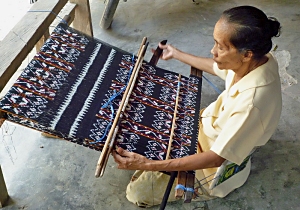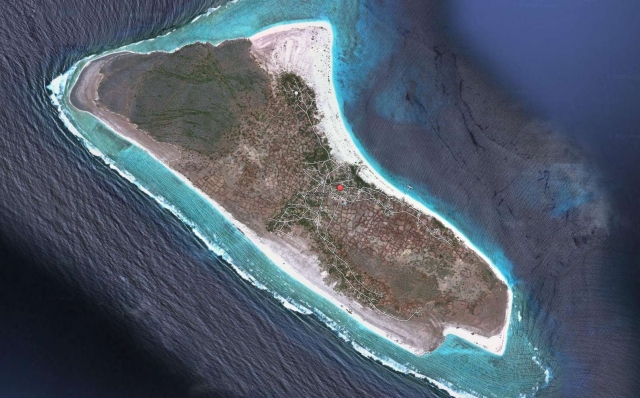Ndao - a characteristic mixture of Rotinese and Savunese styles
One would expect Ndaoese culture to be fully assimilated to that on the hundred times larger neighbouring island, and indeed in the last decades, which saw most Ndaoese converting to Christianity (a process that the Rotinese went through already in the 17th C.) differences are disappearing. But in the early to middle 20th C. Ndaoese culture was still remarkably distinct - due, no doubt to the treachery of the narrow strait separating it from Roti, which is marked by reefs and strong currents. Also, the only anchorage on Ndao, on the eastern side, near the main town of Oli, is unusable during the monsoon and safe only part of the year. As a result, the Ndaoese language still retains a strong similarity to Savunese, and the people have developed a unique economic system allowing them to survive on their tiny,inhospitable speck in the ocean. Ndao is so infertile that agriculture and animal husbandry alone cannot support more than a thousand people - if that many. Like on Savu, lontar tapping is the only reliable source of sustenance. As a result Ndaoese men have over the centuries fanned out to other parts of the archipelago, especially Roti and the much larger Flores, Sumba and Timor to work as itinerant gold- and silversmiths, renowned for their fine filigree and work in hair-thin gold thread, leaving their women behind to work the small plots and practice weaving. Unlike on Savu, part of the weaving on Ndao always had a commercial purpose. When the men returned from their seasonal work in the diaspora they brought weaving jobs back home. The commissioned pieces often were to be executed in a foreign vernacular. In the second half of the 20th C. this process of commercialization has accelerated to the point where nowadays most of the 'Rotinese' ikats are actually made on Ndao. This inevitably influenced the Ndaoese style, which had originally been very similar to that of Savu, but over time became more Rotinese in overall look - though still distinguishable, both by patterning and tonality. And part of that identifiably Ndaoese character is still identifiably Savunese, such as the uneven number of warp ikat stripes on the men's shoulder cloths. Ndao ikats from the period when they were still easily identifiable as such are quite rare. Those of course are made with vegetably dyes only. Wild morinda (mengkudu, Indian mulberry) and indigo plants used to grow in abundance, whereas now they are hardly found, so that the weavers resort to chemical dyes. There are replanting programs under way, but it will presumably take years before the Ndaose weavers can revert to using natural dyes - assuming they would want to. As it appears now, only demand from foreign buyers, substantial and sustained, could conveivably revive the traditional techniques. | ||||||




